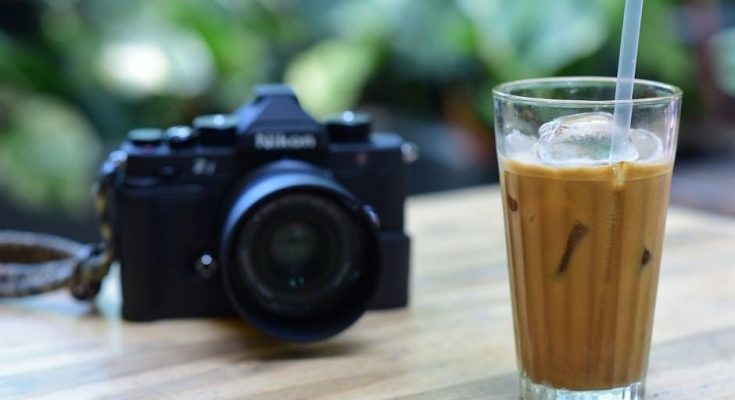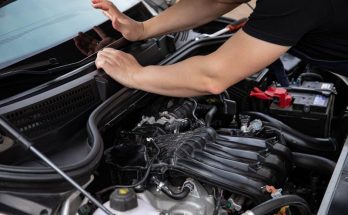Welcome to the Nikon Coolpix camera instruction manual․ This guide provides essential information to help you understand and utilize your camera’s features effectively․ It covers setup, operation, and troubleshooting, ensuring you get the most out of your photography experience․
1․1 Overview of the Nikon Coolpix Camera
The Nikon Coolpix camera is a high-quality digital imaging device designed to capture stunning photos and videos with ease․ Known for its user-friendly interface and advanced features, it caters to both beginners and experienced photographers․ The camera boasts a compact design, high-resolution sensors, and versatile shooting modes․ With options like Auto Mode for effortless photography and Manual Mode for creative control, the Coolpix series offers flexibility for various shooting scenarios․ Its durable construction and modern technology ensure reliable performance, making it a popular choice for capturing life’s precious moments․ This manual will guide you through maximizing its potential for exceptional imaging results․
1․2 Purpose of the Instruction Manual
This instruction manual is designed to help users maximize the potential of their Nikon Coolpix camera․ It provides comprehensive guidance on setup, operation, and troubleshooting, ensuring a seamless photography experience․ The manual covers essential features, shooting modes, and maintenance tips to help you capture stunning images․ Whether you’re a beginner or an advanced user, this guide offers detailed instructions to optimize your camera’s performance․ It also includes information on updating firmware, cleaning, and storing the device properly․ By following this manual, you’ll be able to unlock the full capabilities of your Nikon Coolpix and enhance your photography skills․ Refer to it regularly to make the most of your camera․
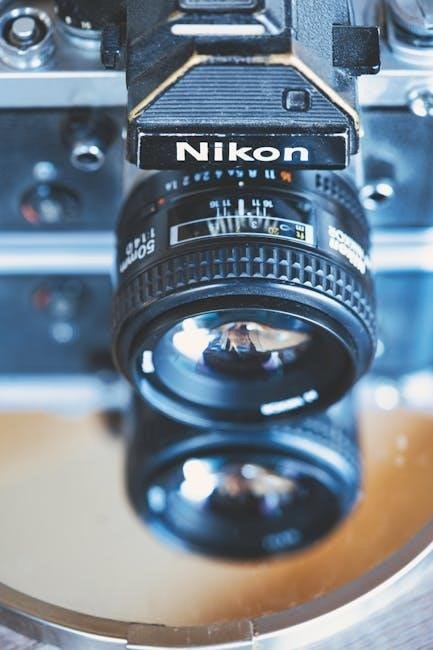
Camera Overview
The Nikon Coolpix camera is a high-quality, compact digital camera designed for capturing stunning images with ease․ It features advanced settings, intuitive controls, and a sleek design, making it ideal for both casual and professional photography․
2․1 Key Features of the Nikon Coolpix
The Nikon Coolpix camera offers a range of impressive features designed to enhance your photography experience․ It includes high-resolution image sensors, versatile zoom lenses, and advanced autofocus systems for sharp and detailed photos․ The camera also supports various shooting modes, such as Auto, Scene, and Manual, allowing you to tailor settings to different environments and creative preferences․ Additionally, it features built-in Wi-Fi for easy image transfer, HD video recording capabilities, and intuitive menu navigation․ These features make the Coolpix an excellent choice for both amateur and professional photographers seeking versatility and quality in a compact device․
2․2 Camera Design and Layout
The Nikon Coolpix camera is designed with ergonomics in mind, featuring a compact and lightweight body that fits comfortably in your hand․ The intuitive layout places key controls, such as the mode dial and zoom lever, within easy reach․ The rear of the camera houses a high-resolution LCD screen for previewing images and navigating menus․ The top panel includes essential buttons for power, shutter release, and movie recording․ The camera’s design emphasizes ease of use, with a logical arrangement of buttons and dials to streamline your photography workflow․ Built with durability in mind, the Coolpix combines style and functionality, making it both user-friendly and visually appealing․
2․3 Essential Camera Components
The Nikon Coolpix camera features several essential components designed to enhance your photography experience․ The lens is the core of the camera, capturing light and focusing on your subject․ The LCD screen on the rear allows you to preview and review images, as well as navigate through menus․ The memory card slot is where you insert your storage media to save photos and videos․ The battery compartment houses the power source, ensuring your camera is always ready to use․ Additionally, the camera includes ports for charging, data transfer, and connecting external devices․ Understanding these components is crucial for optimal camera operation and performance․
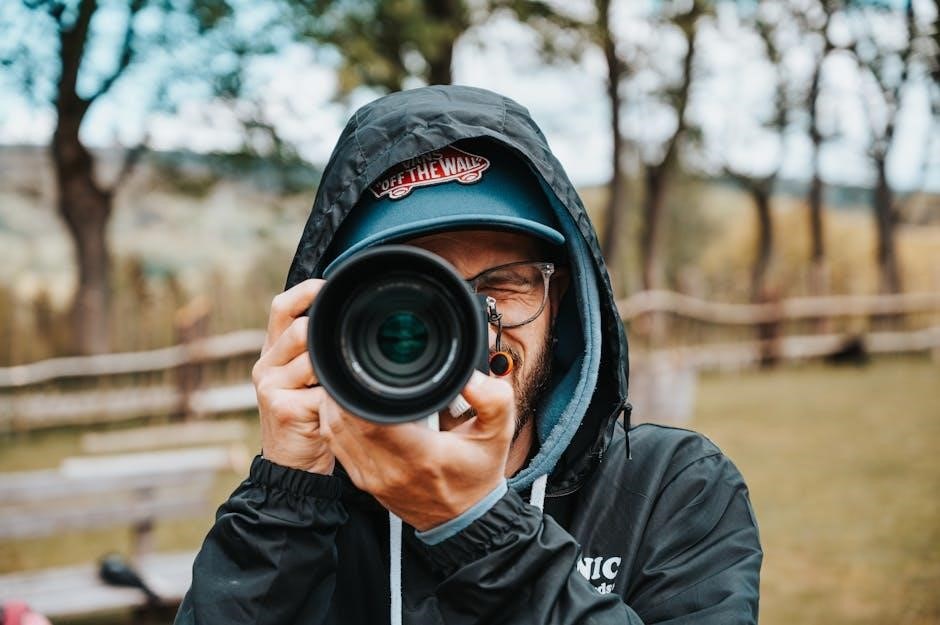
Getting Started
Unboxing and setting up your Nikon Coolpix camera is straightforward․ Begin by charging the battery, inserting the memory card, and familiarizing yourself with basic camera settings for optimal use․
3․1 Unboxing and Initial Setup
Unboxing your Nikon Coolpix camera is an exciting first step․ Carefully remove the camera and accessories from the packaging, ensuring all components are included․ These typically include the camera body, rechargeable battery, battery charger, USB cable, wrist strap, and user manual․ Before proceeding, verify that no items are missing or damaged․ Read the manual thoroughly to familiarize yourself with the camera’s layout and features․ Charge the battery fully using the provided charger to ensure optimal performance․ Once charged, insert the battery into the camera compartment, following the manual’s guidance for proper installation․ This initial setup prepares you to begin exploring your camera’s capabilities and capturing stunning images․
3․2 Charging the Battery
Charging the battery is essential before using your Nikon Coolpix camera for the first time․ Locate the rechargeable battery and the provided charger․ Plug the charger into a power outlet and insert the battery, ensuring proper alignment of the terminals․ The charging process typically takes 2-3 hours, depending on the model․ A blinking indicator light on the charger signals that charging is in progress, while a steady light confirms it is complete․ Avoid using third-party chargers to prevent damage to the battery or camera․ Once fully charged, remove the battery from the charger and store it securely․ This ensures your camera is ready for use and maintains optimal battery health․
3․3 Inserting the Memory Card
Inserting the memory card into your Nikon Coolpix camera is a straightforward process․ First, ensure the camera is turned off to prevent any damage or data loss․ Locate the memory card slot, typically found on the side or bottom of the camera․ Open the compartment and gently insert the memory card, ensuring it is properly aligned and securely seated․ Close the compartment and turn the camera on to verify the card is recognized․ Use only compatible memory cards, such as SD, SDHC, or SDXC cards, as specified in your camera’s manual․ Formatting the card via the camera menu is recommended for optimal performance․ Always handle the memory card by the edges to avoid damaging the contacts․
3․4 Basic Camera Settings
Configuring basic camera settings is essential for capturing high-quality images․ Begin by setting the image quality to your preferred resolution and file format, such as JPEG or RAW․ Adjust the white balance to match the lighting conditions, ensuring accurate colors․ Set the ISO sensitivity, with lower values (e․g․, ISO 100) suitable for bright lighting and higher values (e․g․, ISO 6400) for low-light conditions․ Select the appropriate autofocus mode, such as Single AF for stationary subjects or Continuous AF for moving objects․ Familiarize yourself with the shooting modes, starting with Auto Mode for ease of use․ Access these settings via the camera menu, and refer to the manual for detailed instructions tailored to your Nikon Coolpix model․ Properly configuring these settings will enhance your photography experience and ensure optimal results․
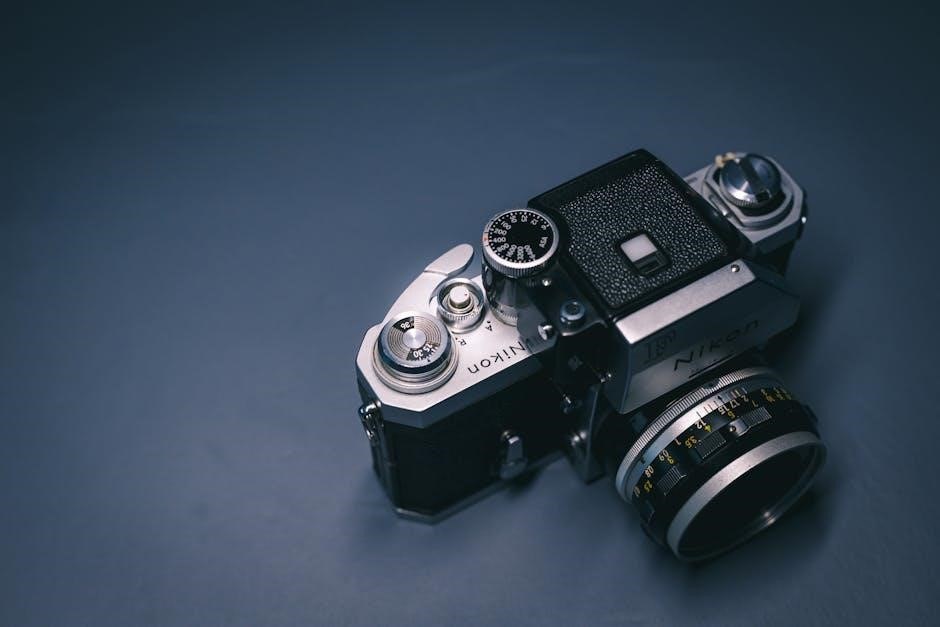
Shooting Modes
The Nikon Coolpix offers various shooting modes to suit different photography needs, including Auto Mode, Scene Modes, Manual Mode, and Special Shooting Modes for enhanced creativity and control․
4․1 Auto Mode
In Auto Mode, the Nikon Coolpix camera automatically adjusts settings like exposure, ISO, and focus, making it ideal for beginners or casual shooters․ This mode simplifies photography by letting the camera handle all the technical details, ensuring well-balanced and clear images in most lighting conditions․ It’s perfect for everyday snapshots or when you want to capture moments quickly without adjusting settings manually․ The camera also selects the appropriate scene mode based on the detected environment, optimizing results for portraits, landscapes, or other common scenarios․ While it limits manual control, Auto Mode provides a reliable and user-friendly experience, making it a great starting point for new users․
4․2 Scene Modes
Scene Modes provide predefined settings tailored to specific shooting scenarios, optimizing image quality by automatically adjusting exposure, ISO, and focus․ These modes enhance results in diverse conditions, whether capturing portraits, landscapes, or action shots․ Portrait Mode emphasizes subject focus with a shallow depth of field, while Landscape Mode prioritizes wide-depth clarity and vibrant colors․ Night Portrait and Sports Modes effectively handle low-light and fast-moving subjects․ Additional modes like Close-up and Sunset further tailor settings for specific conditions․ Accessible via the menu, Scene Modes simplify photography by tailoring settings to match your creative vision, making them indispensable for capturing life’s diverse moments with precision and ease․
4․3 Manual Mode
Manual Mode offers full control over camera settings, allowing photographers to adjust aperture, shutter speed, and ISO sensitivity for precise image control․ This mode is ideal for experienced users who want to customize every aspect of their shots․ Accessible via the mode dial or menu, Manual Mode requires a good understanding of exposure parameters to achieve desired results․ It is particularly useful for creative photography, enabling photographers to define every detail of their images․ Whether capturing intricate lighting setups or experimenting with artistic effects, Manual Mode provides the flexibility needed to bring unique visions to life․ This mode is essential for advanced photographers seeking ultimate control over their craft․
4․4 Special Shooting Modes
Special Shooting Modes on the Nikon Coolpix camera are designed to capture specific scenes with optimal results․ These modes include options like Night Landscape, Portrait, Sports, and Super Vivid, each tailored to enhance particular types of photography․ Night Landscape mode, for example, is ideal for low-light environments, capturing sharp details in the dark․ Portrait mode focuses on subject clarity while blurring backgrounds, creating professional-looking portraits․ Sports mode freezes fast-moving subjects, ensuring crisp action shots․ Super Vivid mode amplifies colors, adding vibrancy to images․ Additionally, the camera offers advanced features like Multiple Exposure and Time-Lapse, allowing for creative experimentation․ Refer to the manual for a full list of modes and instructions on how to use them effectively․
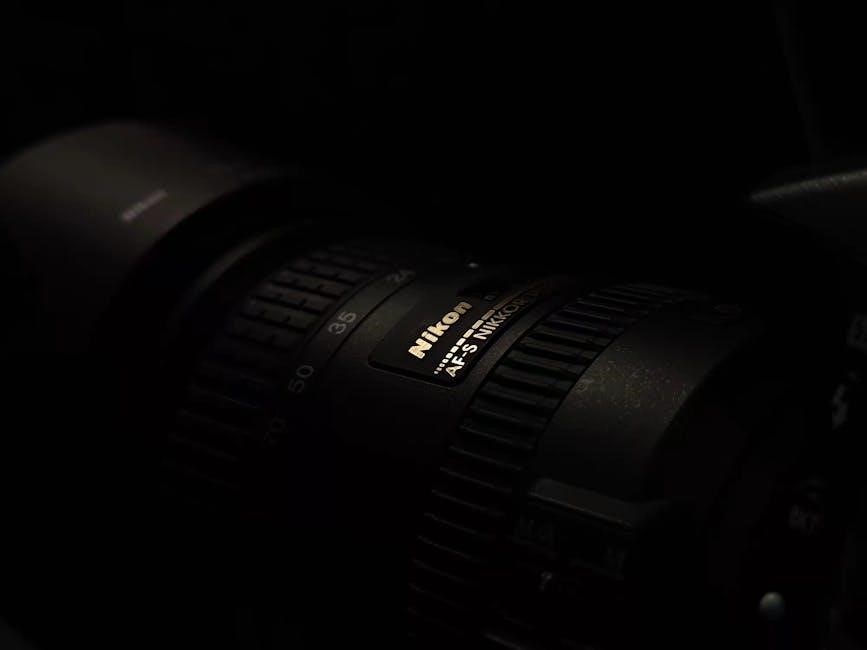
Camera Settings
Explore and customize camera settings like image quality, white balance, ISO sensitivity, and focus modes to optimize your photography experience and achieve desired results․
5․1 Image Quality Settings
The Nikon Coolpix offers various image quality settings to suit your needs․ You can choose from different resolutions, such as 4K or HD, and compression levels like Fine or Normal․ These settings allow you to balance file size and image detail, ensuring your photos are crisp and vibrant․ For professional-grade results, enable RAW format to capture uncompressed data․ Additionally, adjust compression ratios to optimize storage without compromising quality․ Customizing these settings helps you achieve the desired visual outcomes, whether you’re shooting landscapes, portraits, or action shots․
5․2 White Balance
White balance adjusts the color temperature of your images to ensure accurate tones under various lighting conditions․ The Nikon Coolpix offers multiple presets, including Auto, Daylight, Fluorescent, Incandescent, and Cloudy, to match your environment․ For precise control, use the Custom White Balance option, which allows you to set a specific color temperature or use a reference object․ This feature is particularly useful for capturing natural skin tones and vibrant colors in both indoor and outdoor settings․ Experiment with different settings to enhance the visual appeal of your photos and achieve professional-grade results․ Properly setting the white balance ensures your images look their best in any lighting scenario․
5․3 ISO Sensitivity
ISO sensitivity controls the camera’s light sensitivity, allowing you to capture images in various lighting conditions․ The Nikon Coolpix offers a range of ISO settings, typically from 100 to 6400, with Auto ISO available for convenience․ Lower ISO values (e․g․, 100-400) are ideal for bright lighting to minimize noise, while higher values (e․g․, 1600-6400) are better for low-light scenarios, though they may introduce grain․ Adjusting ISO ensures properly exposed images without over-relying on flash․ Use Auto ISO for convenience, but fine-tune manually for optimal results in challenging lighting․ Balancing ISO with aperture and shutter speed is key to achieving clear, noise-free photos․ Experiment with settings to master your camera’s capabilities․
5․4 Focus Modes
The Nikon Coolpix offers multiple focus modes to suit different shooting scenarios․ Auto Focus (AF) modes include AF-A (Automatic AF), which switches between single and continuous AF, AF-C for continuous focusing on moving subjects, and AF-S for stationary subjects․ Manual Focus (MF) allows precise control using the lens ring․ The camera also features Face-Priority AF for portraits and Subject-Tracking AF to lock onto moving subjects․ In Auto Mode, the camera automatically selects the focus area․ For more control, use the shutter button’s half-press to focus and full press to capture․ Experiment with these modes to ensure sharp images in various conditions, from still landscapes to dynamic action shots․ Mastering focus modes enhances your photography experience and ensures clearer results․
5․5 Movie Recording Settings
The Nikon Coolpix allows you to capture high-quality video with customizable settings․ Choose from resolutions like 4K UHD or Full HD, and select frame rates for smooth motion․ Optical zoom is available during recording, and stabilization helps reduce camera shake․ Enable wind noise reduction for clearer audio․ For better sound, use the built-in stereo microphone or an external mic․ Adjust settings like white balance and ISO sensitivity to match your scene․ Access these settings via the movie mode menu․ Consult the manual for detailed instructions on optimizing video recording for professional results․ Experiment with different settings to enhance your filmmaking experience and achieve stunning videos․ Proper setup ensures your movies are sharp, vibrant, and engaging․

Playback and Editing
Review your images on the camera’s LCD screen, edit photos in-camera, and create slideshows to showcase your work․ Utilize camera menus for enhanced playback options․
6․1 Reviewing Images
Reviewing images on your Nikon Coolpix is straightforward․ Use the playback button to view photos on the LCD screen․ Navigate through images using the zoom control or multi-selector․ Zoom in to inspect details or zoom out for a thumbnail view․ Protect important images from accidental deletion using the protect feature․ Delete unwanted photos directly from the playback menu․ Utilize the camera’s histogram to analyze exposure and ensure your shots are perfectly captured․ This feature helps in identifying overexposed or underexposed areas․ Additionally, you can rotate images and view shooting information such as aperture, shutter speed, and ISO․ This helps in refining your photography skills for future shots․
6․2 Editing Images In-Camera
The Nikon Coolpix allows basic in-camera editing to refine your photos without transferring them to a computer․ Adjust brightness, contrast, and color balance directly from the playback menu․ Use the cropping tool to trim unwanted parts of the image or resize photos for sharing․ Apply filters or effects to enhance your shots creatively․ Selective editing options enable precise adjustments to specific areas of the image․ Access these features by navigating to the retouch menu during playback․ A histogram display helps analyze exposure levels, guiding your edits for optimal results․ Save edited copies separately, preserving the original image․ This feature is ideal for quick touch-ups before sharing or printing your photos․
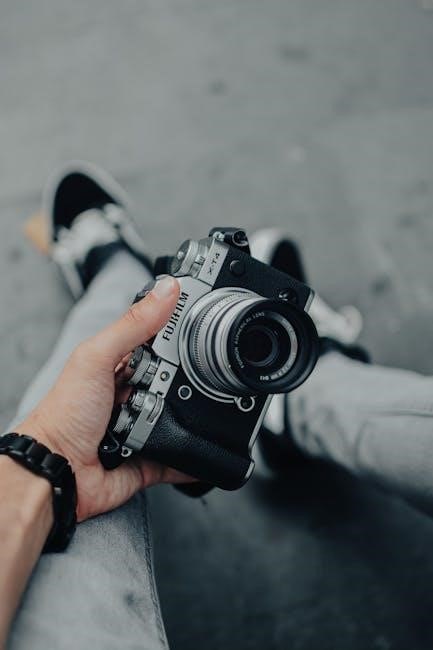
6․3 Creating a Slideshow
The Nikon Coolpix camera allows you to create engaging slideshows directly from your stored images․ To begin, navigate to the playback menu and select the slideshow option․ Choose the images you wish to include, either individually or by selecting a folder․ Customize the slideshow by adjusting the display time for each image and adding transitions for a smooth viewing experience․ You can also add background music from your memory card to enhance the presentation․ Once configured, preview the slideshow to ensure it meets your expectations․ Save your settings to reuse the slideshow or play it immediately to share with others․ This feature is perfect for showcasing your favorite memories in a dynamic and organized manner․
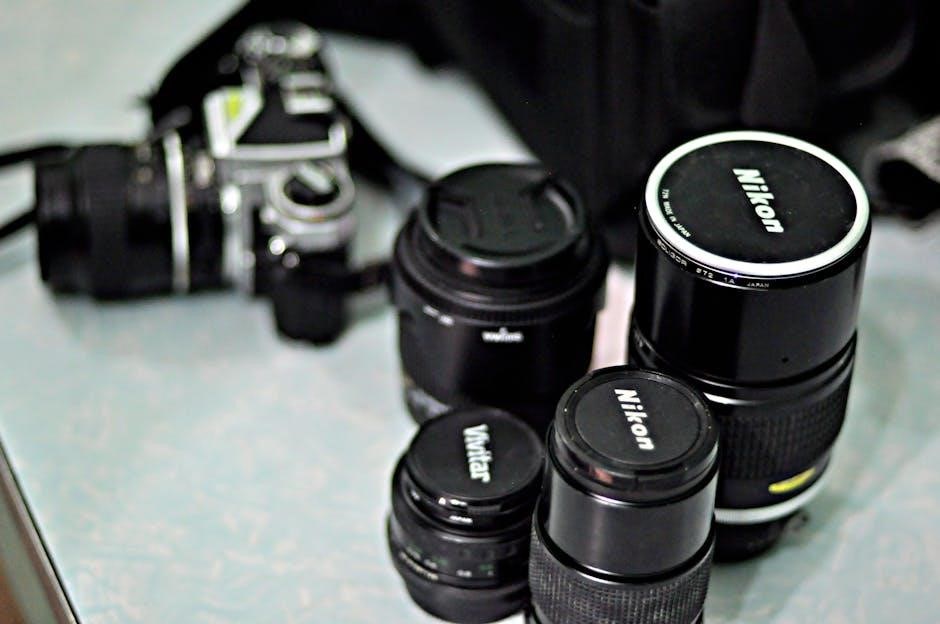
Troubleshooting
This section addresses common issues and provides solutions to help you resolve problems with your Nikon Coolpix camera, ensuring optimal performance and troubleshooting efficiency․
7․1 Common Issues and Solutions
Common issues with the Nikon Coolpix camera include battery drain, blurry images, and error messages․ Ensure the battery is fully charged and avoid using third-party chargers․ For blurry photos, check autofocus settings or clean the lens․ If error messages appear, restart the camera or update firmware․ Memory card errors may require formatting or replacement․ If issues persist, consult the manual or contact Nikon support for assistance․ Regular firmware updates and proper camera maintenance can prevent many problems․ Always use genuine Nikon accessories to avoid compatibility issues․ Refer to the troubleshooting guide in the manual for detailed solutions to specific errors․
7․2 Error Messages and Resolutions
The Nikon Coolpix camera may display error messages such as “Memory Card Error,” “Lens Error,” or “Firmware Update Required․” For memory card issues, format or replace the card․ Lens errors often resolve by cleaning the lens or restarting the camera․ Firmware-related errors require updating to the latest version․ If an error persists, reset the camera to default settings or contact Nikon support․ Always use genuine Nikon accessories to avoid compatibility problems․ Regularly updating firmware and maintaining the camera can help prevent errors․ Refer to the troubleshooting section in the manual for specific solutions to error messages and ensure optimal camera performance․ Proper care and updates are key to resolving most issues effectively․
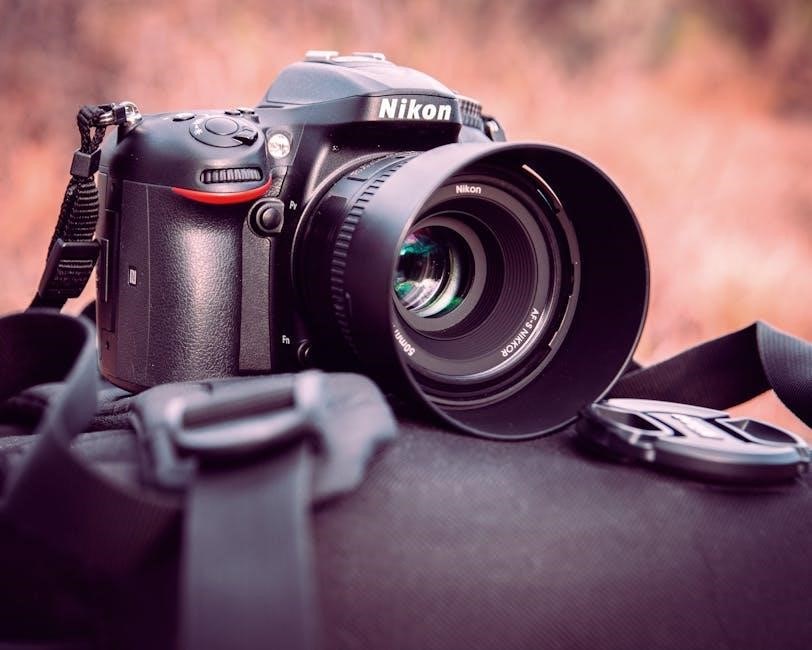
Maintenance and Care
Regularly clean the camera and lens with a soft cloth to prevent damage․ Store the camera in a cool, dry place, ideally in its original case․ Ensure firmware is updated for optimal performance․ Avoid exposing the camera to harsh chemicals or extreme temperatures․ Use genuine Nikon accessories to maintain functionality and longevity․ Proper care extends the camera’s lifespan and ensures top image quality․ Always handle the camera with care to prevent physical damage and maintain its precision engineering․ Regular maintenance enhances reliability and keeps your Nikon Coolpix performing at its best․
8․1 Cleaning the Camera
Regular cleaning is essential to maintain your Nikon Coolpix camera’s performance․ Use a soft, dry microfiber cloth to gently wipe the lens, LCD screen, and camera body; For stubborn smudges or fingerprints, lightly dampen the cloth with distilled water, but avoid harsh chemicals or alcohol․ Never touch the lens surface with your fingers, as oils can leave permanent marks․ Clean the camera after each use to prevent dust buildup․ For the lens, use a lens cleaning tissue and a circular motion․ Avoid using compressed air on the lens or screen, as it may cause damage․ Store the camera in a protective case when not in use to prevent scratches․ Regular cleaning ensures optimal image quality and prolongs the camera’s lifespan․ Always handle the camera with care to maintain its precision engineering․
8․2 Storing the Camera
Proper storage is crucial to maintain your Nikon Coolpix camera’s condition․ Always store the camera in its original case or a protective pouch to prevent scratches and damage․ Remove the battery and memory card before storage to prevent leakage or data corruption․ Place the camera in a cool, dry environment, avoiding direct sunlight and extreme temperatures․ Avoid storing the camera in humid areas, as this can lead to mold or rust․ For extended storage, consider using a silica gel packet to absorb moisture․ Regularly check the camera during storage to ensure it remains in good condition․ Never store the camera with the lens exposed or in a compressed position․ Follow these guidelines to preserve your camera’s functionality and longevity․
8․3 Updating Firmware
Regular firmware updates are essential to enhance your Nikon Coolpix camera’s performance, add new features, and fix potential issues․ Visit Nikon’s official support website to check for the latest firmware version․ Before updating, ensure the camera is fully charged and connected to a computer using the original USB cable․ Download the firmware file from the website and follow the on-screen instructions to complete the update․ Do not disconnect the camera or turn it off during the update process, as this could cause permanent damage․ After the update, restart the camera and verify the new firmware version in the settings menu․ Always use genuine Nikon accessories to ensure compatibility and avoid malfunctions․
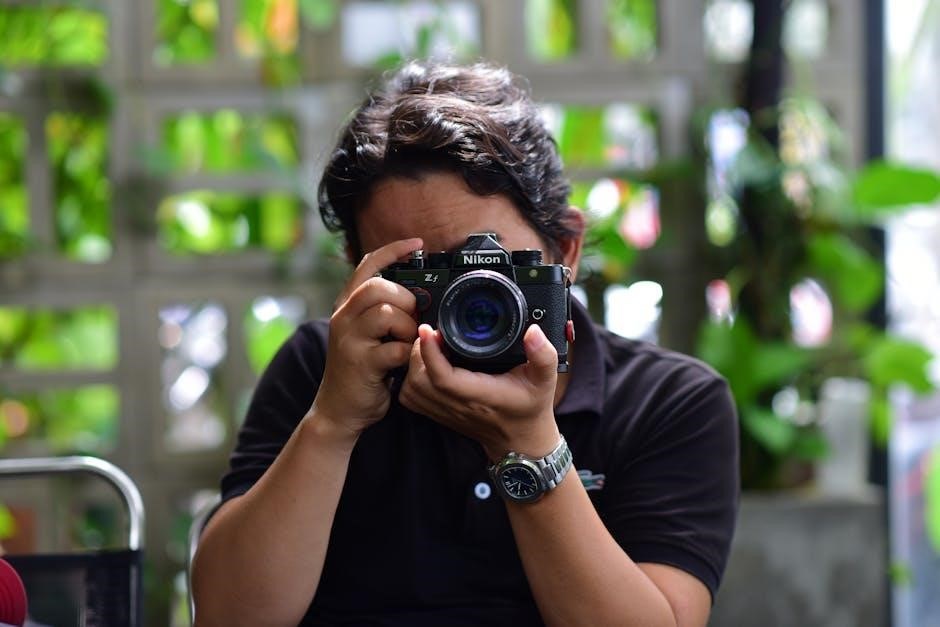
Additional Resources
Explore Nikon’s official website for downloadable manuals, firmware updates, and troubleshooting guides․ Third-party tutorials and forums offer additional tips and in-depth camera usage insights․
9․1 Online Support and Downloads
Nikon provides extensive online support through their official website, offering free PDF downloads of user manuals, firmware updates, and software for various Coolpix models․ Visit imaging․nikon․com/support to access resources tailored to your camera․ Additionally, Nikon’s Manual Viewer 2 app allows iPhone, iPad, and Android users to download and view manuals directly on their devices․ For troubleshooting, the site includes detailed error message resolutions and installation guides․ Ensure compatibility by checking the accessory list for your specific model․ Download the latest firmware to enhance performance and maintain optimal functionality․
9․2 Firmware Update Instructions
Firmware updates enhance your Nikon Coolpix camera’s performance and add new features․ Visit Nikon’s official support website to download the latest firmware for your specific model․ Ensure compatibility by selecting the correct version․ Detailed instructions are provided on the download page, including steps for transferring the update to your camera using a card reader or other compatible equipment․ Follow the on-screen guidance carefully to avoid errors․ Nikon recommends using genuine accessories for updates․ After updating, restart your camera to apply changes․ Regular firmware updates ensure optimal functionality and compatibility with the latest technologies․ Always refer to Nikon’s official guidelines for a smooth update process․
9․3 Third-Party Guides and Tutorials
Third-party guides and tutorials offer additional resources to enhance your Nikon Coolpix camera experience․ Websites like YouTube and photography forums provide detailed video tutorials and user-generated tips․ Some platforms offer downloadable PDF guides and repair manuals, such as the Nikon FM-2 repair manual, which can be useful for DIY enthusiasts․ These resources often cover advanced techniques, troubleshooting, and customization․ Additionally, third-party user manuals, like those for the Nikon Coolpix L4 and P7700, are available online․ These guides can help you explore features beyond the basics, providing insights from experienced photographers․ Always ensure the credibility of the source to avoid misinformation and maintain your camera’s performance and safety․
